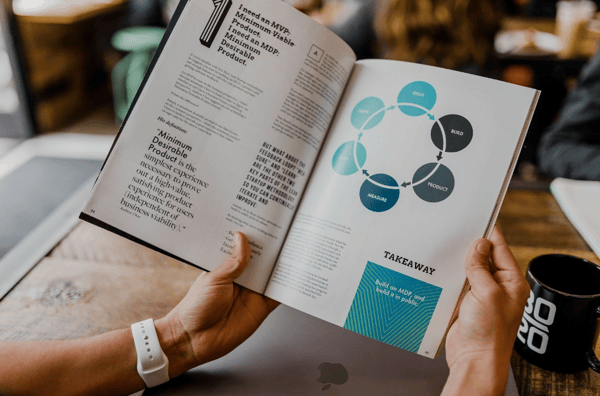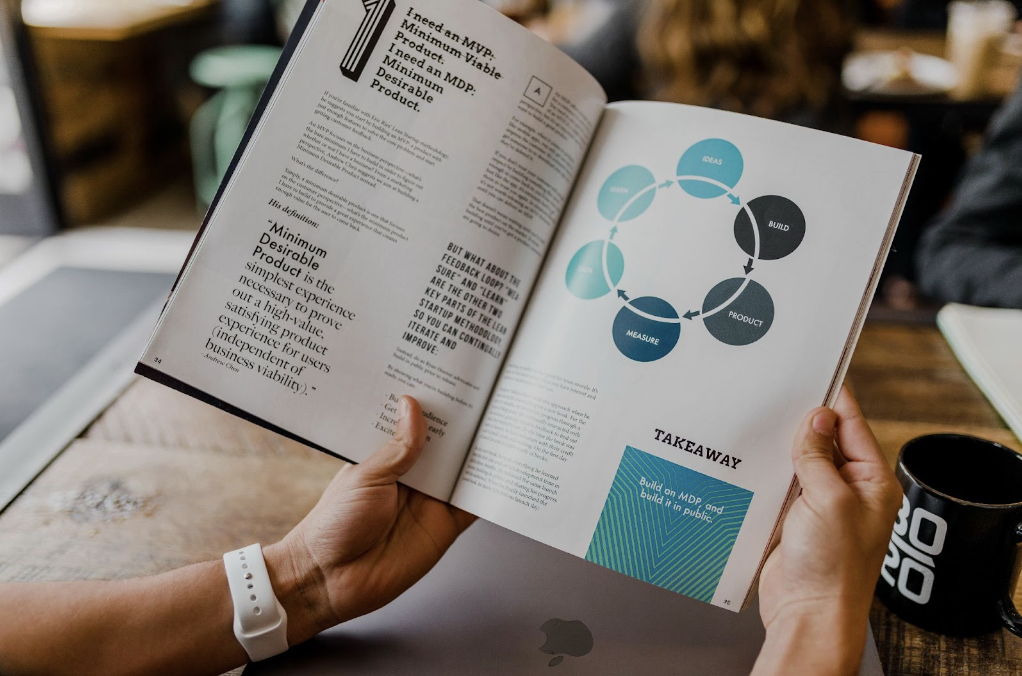Product development entails the step-by-step approach of transforming an idea from its concept stage to product delivery and beyond. Whether you are interested in creating an all-new product offering or upgrading an existing product, the product development cycle is one of the first concepts to consider before starting any work. From brainstorming and generating ideas for the original concept to engaging in strategic planning and product making and subsequently releasing it to the market, the product development cycle is handy throughout.
The Ideal Stages of Product Development
The following section of the article sets out the ideal stages involved in the process of product development.

The Ideal Stages of Product Development
The following section of the article sets out the ideal stages involved in the process of product development.
Recognizing the market need.
To resolve an ongoing problem or find a more efficient solution than the existing one, products come into play. Therefore, the initial step in the product development process is to recognize the problem that necessitates solving. This can be achieved by engaging in discussions with potential clients and conducting quantitative surveys along with other kinds of user research.
Quantifying the opportunity.
Every problem doesn't necessarily require a product-based solution, but its significance and the number of people it affects can give you an estimate of its worthiness. If it causes enough discomfort and a significant number of people are impacted, then it may be a problem worth solving. People may be willing to pay for a solution, whether it's with their hard-earned money or personal data. So, when it comes to identifying problems that require solving, it's vital to consider the scope of the issue and the willingness of people to invest in a solution.
Conceptualizing the product
There are some solutions to those problems which may seem completely obvious, but others may be completely out-of-the-box. This is where you need to put in the effort and implement creativity and innovation to propose how a product may serve user needs.
Validating the solution
It is absolutely significant to test the viability of a proposed solution before investing too much time in prototyping and design. This test can be conducted at the conceptual level only to determine if the product idea is worth pursuing further or if it will be rejected or minimally adopted by the target audience.
Building the product roadmap
Once you have a genuine and reasonable product concept ready with you, the product management cycle takes you further to devise the product roadmap. Here you can recognize which goals and themes have to be prioritized to develop first in order to provide solutions to key pain points.
Developing a minimum viable product (MVP).
The preliminary version of the product design (the MVP) requires an adequate degree of functionality with which customers can use it.
Releasing the MVP to users.
Conducting experiments can help evaluate and measure levels of interest, keep marketing strategies and messaging a top priority, and initiate the testing of packaging and price sensitivity. This also initiates a feedback loop to incorporate new ideas, receive complaints and suggestions inside the prioritization process to ultimately populate the product backlog.
Ongoing iteration based on user feedback and strategic goals.
When a product is out in the market, it is important to consider user feedback through multiple channels to initiate any changes, enhancements, and expansions in the original design. With the passage of time, the product roadmap will progress and advance on the basis of this learning, along with the objectives and targets set by the business for the product. It seems like a ceaseless and reiterative process until the product reaches the end of its lifecycle.
Product Development is Not Product Management
Product development and product management are two critical components of bringing a successful product to market. While they share some similarities, they are fundamentally different. Product development is focused on the creation and design of a product, from ideation to prototyping and testing. On the other hand, product management is responsible for ensuring the product meets customer needs, aligns with business goals, and generates revenue. It's the bridge between the product development team and the market.

How to Create a Product Development Plan in 3 Steps
1. Begin the process with a product vision.
A product development plan commences with a product vision, which seeks to align the team around a mutual objective keeping in mind the product. After defining a product's ultimate purpose, target audience, and benefits, a product mission statement has to be established. This is then used to determine the primary goals for the product, which may initially be unclear but can soon become specific, measurable targets, such as key performance targets (KPIs.) These targets guide the development of the product's key characteristics, any upgrades, and the capabilities required to accomplish them.
2. Formulating the roadmap.
Once the product team has done its due diligence with customer research and validation, it's time to get down to the exciting business of crafting a product roadmap! The team can prioritize the most important themes that need to be addressed, with a keen eye on creating value for the customer and aligning with the product's goals and key metrics. While date-based milestones and targets can certainly be established, the focus should always be on delivering value and adapting to the evolving needs of the product. Let's dive deeper into the art of product road mapping!
3. Implement the roadmap for maximum impact.
Are you ready to see your product come to life? Once the product roadmap has been established, it's time to kick things into high gear. The implementation team can create schedules, break down significant themes into sprints, and generate iterations of the product. This creates a valuable feedback loop, allowing customers, the sales team, and support to provide feedback on what's working well and what could be improved.
By reviewing data and synthesizing feedback, the team can continually update the product roadmap, making sure every development cycle is utilized for maximum impact. It's an ongoing cycle of improvement, with the product backlog being groomed to ensure the team is always on top of the latest opportunities and areas that need honing, improving, and expanding. Get ready to see your product soar!
Learn about creating user stories with our recent article.
Incorporating Product Roadmaps into Product Development
Whether you're just starting out with the conceptualization phase or are already working to recognize and validate an emerging need in the market, it's essential to have a solid system in place for capturing your product's key objectives and themes. With the right prioritization and summarization techniques, you can ensure that your product stays on track and meets the needs of your target audience.
As you begin the early stages of planning, it's critical to have the right tool at your disposal. And that tool is a product roadmap - a strategic, visual representation of your high-level product.
But why is it so important to have a visual representation? Well, for starters, it helps you see the big picture, ensuring that everyone on your team is aligned and working towards the same end goal. It also helps you communicate your vision to stakeholders and customers, ensuring that everyone is on the same page. So if you want to bring your product to life in the best possible way, a visually compelling product roadmap is the way to go!
A visually stunning product roadmap can be the secret weapon you need to secure organizational approval and move forward with new product development. By presenting your strategic goals and plans in an engaging and compelling way, you can earn the buy-in you need to bring your product to life. But how do you ensure your roadmap stands out and captures everyone's attention? By giving it every advantage possible - from beautiful design to clear communication of your product's value proposition. So get ready to wow your stakeholders and watch your product soar!
Agile Product Development: An Overview
Agile product development can be explained as the iterative approach to developing new products that emphasize collaboration, flexibility, and responsiveness to change. In this unique approach to product development, cross-functional teams collaborate together effectively in short development cycles to rapidly produce working prototypes. These can later be tested and refined based on customer feedback obtained through different means. The ultimate aim is to develop products that are top-notch in terms of quality while also being adaptable and flexible to rapidly evolving market conditions. Agile development methods of product development often involve practices such as daily stand-up meetings, continuous testing and feedback, and close collaboration between development teams and stakeholders.
Agile development also emphasizes collaboration and teamwork, fostering a culture of communication and cooperation that can lead to better outcomes. By breaking down silos and encouraging cross-functional collaboration, teams can bring fresh perspectives and new ideas to the table, resulting in more innovative products. Another key benefit of agile development is its focus on quality. By continuously testing and iterating on products, teams can catch issues early and ensure that the final product is of the highest possible quality. This not only leads to better customer satisfaction but can also save time and money in the long run by avoiding costly rework.
In short, agile product development is a powerful tool for any company looking to create high-quality, innovative products that meet the ever-changing needs of their customers. So why not give it a try and see what it can do for you?
Some of the Best Practices of Product Development
Product development is, no doubt, an intricate method. This implies a basic introductory guide is not ideally sufficient to capture the topic in its complete essence. However, we present to you a highly useful list of practices and strategies that you can surely keep in mind to work your way through it:
- maintaining a clear focus on customer value throughout the cycle
- support a high degree of cross-functional alignment
- foster and support a mutual understanding of priorities and plans
- maintain your focus on fulfilling actual customer needs
- aim to invest in tools and software which support an approach to agile product development
- ensure thorough transparency and visibility of the process

Frequently Asked Questions
What are the 5 stages of product development?
The 5 stages of product development are ideation, research, design, testing, and commercialization. During ideation, potential product ideas are generated and evaluated. Research involves market and competitive analysis to determine the feasibility of the idea. Design involves creating a prototype or model. Testing includes product testing and feedback. Commercialization involves the launch and distribution of the product.
What is a product development example?
A car manufacturer creates a new electric vehicle by exploring customer demand and analyzing the market during the ideation and research stages. The design stage involves creating a prototype that meets performance and feature specifications. During testing, safety and customer feedback are evaluated. Finally, the electric car is launched during the commercialization stage, with ongoing improvements made based on customer feedback and market trends.
What are the 7 stages of product development?
-
Ideate
-
Plan
-
Showcase
-
Build
-
Launch
-
Analyze
-
Strategize
What are the 3 types of product development?
The three types of product development are:
Incremental product development: This involves making small improvements or modifications to an existing product to meet changing customer needs or improve its performance.
Platform product development: This involves developing a core product platform or architecture that can be customized and adapted to create multiple products or product lines.
Breakthrough product development: This involves creating entirely new products that introduce new technologies or significantly disrupt existing markets, often involving high levels of innovation and risk.
Did you find this helpful? Harvestr has a variety of articles on topics that might interest you.
